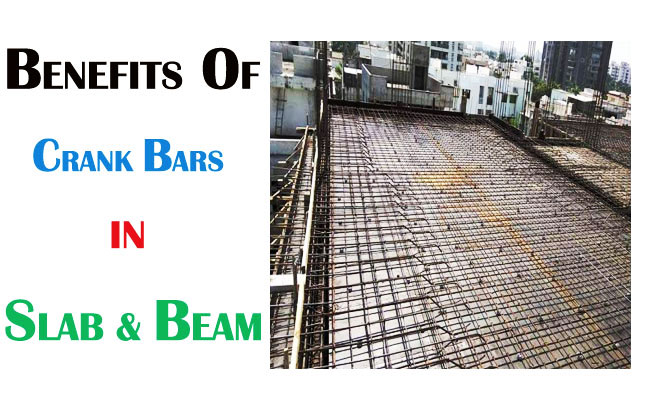Benefits of crank bars in slab & beam

The objective of cranked bars is to provide reinforcements at the bottom in the central point and reinforcements at the top adjacent to the edges both employing the same bars. In some situations, various types of bars are used. Under this circumstance the bottom rods get compressed at a gapping of one third of the span of the slab. Also the rods are provided on the top side near the edges which extends to the adjacent slab also.
Beams generally have maximum sagging bending moment at mid span and maximum hogging moment at supports. Hence the area of bottom reinforcement bars is maximum at mid span and reduces towards supports. To resist the hogging moment at supports, maximum steel is required at top at supports.
To gain economic advantages, part of the bottom reinforcement bars is compressed at a specific distance from the support. Supplementary bars are arranged at top at supports.
The cranked bars are arranged as a substitute for providing the additional bars. These bars are fabricated with the intension that it rests at top of the beam at supports and at bottom of the beam at mid span. It is cost-effective and guarantees coherency of the similar bar.
Usually, cranked bars are bent up at 45 degrees. These bars also facilitate to withstand shear force, in the bent up portion. Shear force becomes extreme at supports and here optimal shear resistance is necessary.
Benefits of providing crank bars in slabs
1.To withstand Hogging (Negative Bending Moment) at supports.
2.To get rid of the risk of the failure of the slabs.
3.To experience the shear force. The shear force is always larger at the sections of supports.
4.The strength of slab is raised significantly with crank bars.
The role of crank bars or bent up bar are very crucial in R.C.C beam or slabs construction as devoid of defending the Hogging (Negative moment) the structure will collapse or the strength of the structure will be decreased. The hogging bending moment will induce at the supports of the slabs and beams.

